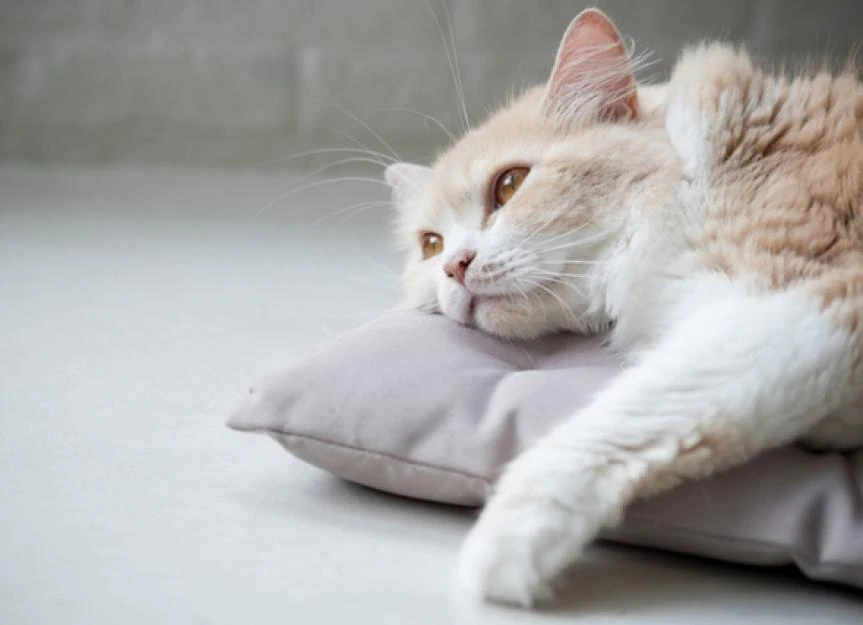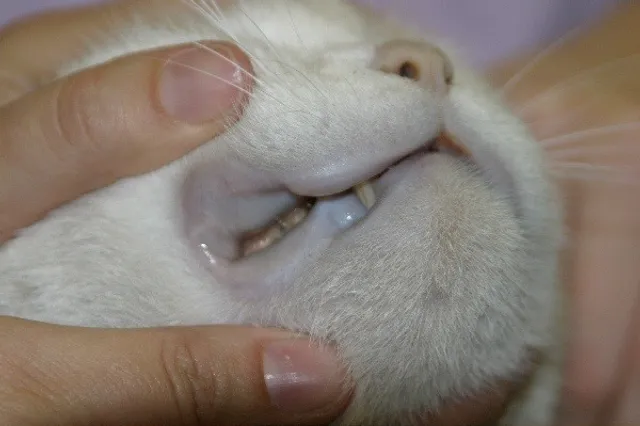Anemia in cats is a pathological condition stemming from a reduction in the total count of red blood cells and hemoglobin levels in the bloodstream. An array of unfavorable factors, ranging from significant blood loss to systemic disorders and bone marrow dysfunction, can trigger the destruction of red blood cells. Anemia often acts as a telltale sign of diseases with diverse causes. It can manifest in cases of parasitic infestations, viral and bacterial infections, and severe poisonings. Timely treatment is crucial to prevent severe irreversible changes within the pet's body.
Root Causes of Anemia in Animals
Red blood cells, or erythrocytes, are distinctive cellular structures containing hemoglobin, a complex protein. In the lungs, hemoglobin, along with iron, binds with oxygen as part of the protein, facilitating its transport to tissues and organs. A decrease in erythrocyte count disrupts biochemical processes and leads to malfunctions in organ and system operations.
Note: Erythrocytes, on average, have a lifespan of about three months, serving as the primary reservoir of hemoglobin. They are generated within the bone marrow.
Causes of Anemia
Viral, bacterial and parasitic infections, hypo- or avitaminosis, autoimmune disorders, genetic anomalies, excessive bleeding, imbalanced diet, toxin exposure, impaired blood clotting, cardiovascular system disorders, hematopoiesis disruption, oncological diseases- Injuries, blood vessel damage, metabolic irregularities, imbalance between erythrocyte production and destruction
Note: Anemia can emerge in the context of neoplasia (cancer), feline leukemia, viral leukemia, and chronic kidney or liver insufficiencies.
The causes of anemia are diverse. Given its urgency for treatment, recognizing its manifestations and clinical symptoms is crucial.
The symptoms vary based on the severity of the condition, the cat's age, overall health, and the specific type of anemia.

Types of Anemia
1. Posthemorrhagic anemia: This develops due to traumas, blood vessel damage in tissues or organs, parasitic infestations, tumors in the liver, intestines, or kidneys, and disorders impacting blood clotting.
2. Hemolytic anemia: Accelerated breakdown and destruction of erythrocytes lead to this type. It can be congenital or acquired, often observed in cases of invasive diseases and cardiovascular disorders.
3. Hypoplastic anemia: Stemming from bone marrow dysfunction, avitaminosis, and disruptions in blood cell formation stages.
4. non-regenerative anemia: Bone marrow suppression, triggered by chronic severe illnesses, pathologies, and intoxication, primarily causes this type.
Symptoms
Paleness, bluish mucous membranes, lethargy, rapid fatigue, altered behavior, reduced activity, weak response to stimuli, drowsiness, irregular heartbeat, shortness of breath, reduced appetite, food refusal.
Affected animals appear feeble, their fur deteriorates, and their skin loses elasticity. Temporal fluctuations in body temperature may occur. Vomiting, nausea, and severe shortness of breath can arise. Mucous membranes turn pale and, in cases of hemolytic anemia, take on a deep brown hue. Anemic kittens may exhibit growth and development lag compared to their healthy counterparts.

Diagnosis and Treatment
A veterinarian establishes a diagnosis through comprehensive examination, diagnostics, historical data, and general symptoms. Hematocrit level tests, complete blood counts, and biochemical analyses are considered. In healthy cats, the hematocrit level typically ranges from 25% to 46%. A significantly lowered indicator confirms the diagnosis.
Analysis may involve spinal taps and biopsies. Physiological fluids, like urine, are also examined. If required, ultrasound, MRI, and differential diagnoses are conducted.
Treatment is tailored to the root cause and test results, considering the cat's age, physiological factors, and the type of anemia.
For posthemorrhagic anemia, halting bleeding rapidly is essential. Tight dressings, tourniquets, and tamponades are applied. Hemostatic medications and blood-clotting-enhancing drugs (Vika sol, ascorbic acid, calcium chloride) are prescribed.
Iron-containing preparations, vitamins, and symptomatic treatments are employed. In severe cases, especially when significant blood loss is the cause, blood transfusion may be administered.
Regardless of the type, replacement therapy is advised, focusing on increasing hemoglobin and erythrocyte levels in the bloodstream. Medications containing iron, cobalt, copper, and zinc are prescribed, along with vitamin B supplements in capsule or injection forms.
The prognosis is favorable with early treatment, before severe complications emerge. For cases caused by cancer, severe traumas, chronic bleeding, or bone marrow damage, the prognosis remains cautious and often unfavorable.
Prevention
Preventing anemia requires systematic care, proper nutrition, adherence to schedules, and maintaining daily routines. Enhance natural diets with vitamin and mineral supplements.
Follow the veterinarian's vaccination schedule. Regularly deworm and treat for ectoparasites.